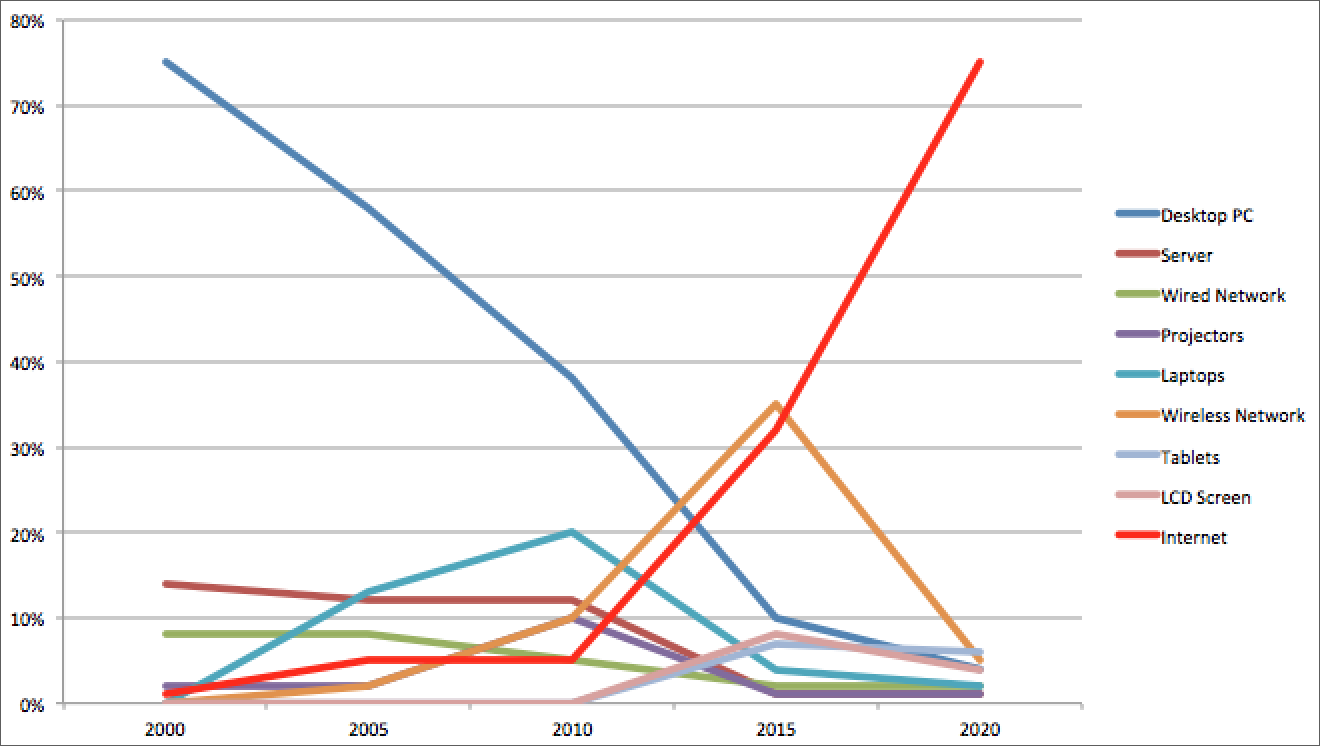
Remember back in the day when your school ICT budget discussions centred around what type of desktop computers to purchase, how many computers to purchase, and how those computers would be allocated around the school? And if your server needed an upgrade? And maybe some networking to a previously unconnected building?
Times have certainly changed – and school ICT budgets provide a valuable insight into how school-owned ICT responsibilities have evolved to reflect those changes.
For most schools the focus of the current ICT infrastructure planning cycle has moved to the provision of robust wireless network access across the school campus, to support a fleet of mobile devices, increasingly owned by staff and students connecting to online resources. The critical tasks associated with file sharing services are being outsourced to cloud providers, for 24/7 access on and off campus, via a range of client operating systems and devices.
Let’s look at how those responsibilities have evolved over the past 15 years, viewed through the prism of the school’s ICT budget….
Note: The charts below estimate average expenditure on ICT infrastructure, and don’t include:
- Professional learning for teachers, which in most schools is sourced from another budget category;
- Salaries for technical support, or the release time for teaching staff to administer computers. This appears to be reasonably constant across the time-frame, but is likely to fall with the introduction of BYOT.
- Costs for online file storage and software services, such as Google Apps for Education, because those services do not carry a cost for schools.
(These figures were compiled at conference workshops in 2013 / 2014, attended by network managers and ICT co-ordinators from schools in eastern Australia.)
| 2000 | |
|
The school network, servicing just one or two areas of the school, had recently transitioned from coaxial cable to ethernet, and was probably built around 10Mb distributor hubs. In 2000, the ICT infrastructure budget was focused on desktop PCs, a server and a network that connected a few ‘computer rooms’ and the admin areas of the school.
|
|
| 2005 | |
|
The wired network was expanded, sometimes into classrooms, and distribution points were being upgraded to 100 Mb switches. Desktop PCs and file servers still dominated infrastructure expenditure and data projectors were installed in computer rooms. Students and teachers could access their saved files from any computer connected to the school network.
|
|
| 2010 | |
|
Wired networks were being upgraded, with more robust links between buildings, but still with 100 Mb to desktop data outlets. The use of laptops had proliferated, often housed in trolleys for ‘portable’ classroom use, though the tablet device had not made an impact (the first iPad was released in 2010). File access was limited to the school campus, or sometimes beyond with convoluted VPN infrastructures. Regular access to the Internet by an increasing number of students and teachers required an upgrade of bandwidth to the campus.
|
|
| 2015 | |
|
1000 Mb PoE switches have replaced the old 100Mb distribution points. Expenditure on desktop PCs has become focused on specialist and admin needs, while the purchase of school-owned mobile devices supports younger year groups, and gaps in BYO programs for older students. As the old data projectors fail they are replaced by HD LCD screens on walls or adjustable trolleys )if they are replaced at all). Student and teacher data is stored in the cloud, with local file servers providing low level network services and proxy-caching services, along with confidential student information and tracking services. Dependence on the Internet for an expanded array of services, most notably file storage and collaboration, requires a minimum of a 100Mb fibre connection. Student web use is channelled through class ‘gateway’ sites developed by teachers to target curriculum priorities.
|
|
| Trends: 2000 – 2015 | |
|
If we look at the trends in each category of school ICT budgets over the 15 years, the standout changes are the decline in school ownership of desktop PCs, and the almost mirror increase in the deployment of wireless networks and Internet access. Also notable is the decline in school ownership of servers (and the provision of related services) and data projectors, which have been replaced by alternate group display and sharing options.
|
|
| Projected: > 2020 | |
|
The school’s ICT budget responsibility has transformed from providing client hardware and software to the provision and maintenance of reliable network access to online services. Even this network responsibility has declined somewhat as students and teachers take advantage of the fast 6G cell-phone network that is available throughout the campus. The school still makes a percentage of it’s ICT infrastructure budget available for new and innovative technologies (such as holographic displays), exploring how these new technologies are able to be used effectively to support and enhance an increasingly diverse and mobile learning environment.
|
|
| Projected: Trends (2000 – 2020) | |
|
If we consider the trends in school ICT budgets over the 20 years, we see that the percentage ICT budget spend on Internet and network access in 2020 is equivalent to the spend on desktop PCs in 2000. Also notable is the almost complete move to online servers for school, student and teacher data services, maintained by commercial providers. (A similar scenario applies to software licensing.) Spending on network infrastructure now focuses on upgrading existing active equipment to provide increased bandwidth and improved wireless connectivity. Although not captured in this ‘infrastructure’ data, the budget allocation for PD, and other staff activities associated with the exploration and integration of new and innovative technologies, has remained reasonably constant, albeit that the focus of those technologies has changed, along with the more rapid turnover of staff in a young and increasingly mobile workforce.
|
|
| Download a PDF copy of ‘School Budgets as an Indicator of ICT Transition’ >>> | |
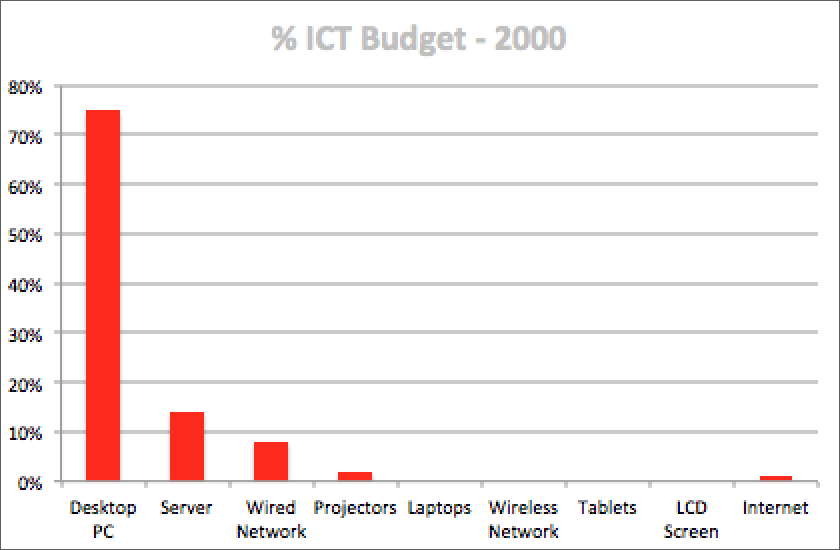 Back in the days of the Y2K bug, school ICT infrastructure was dominated by rooms full of desktop PCs that were renewed every 4 years, connected to a server that also had a limited life span.
Back in the days of the Y2K bug, school ICT infrastructure was dominated by rooms full of desktop PCs that were renewed every 4 years, connected to a server that also had a limited life span.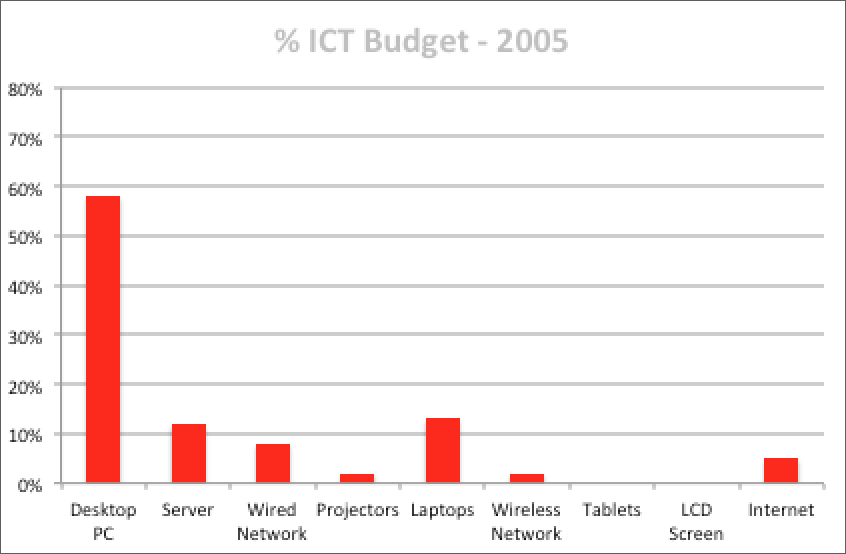 In 2005 schools had begun providing laptop computers for staff use, resulting in increased expenditure on wireless access points.
In 2005 schools had begun providing laptop computers for staff use, resulting in increased expenditure on wireless access points.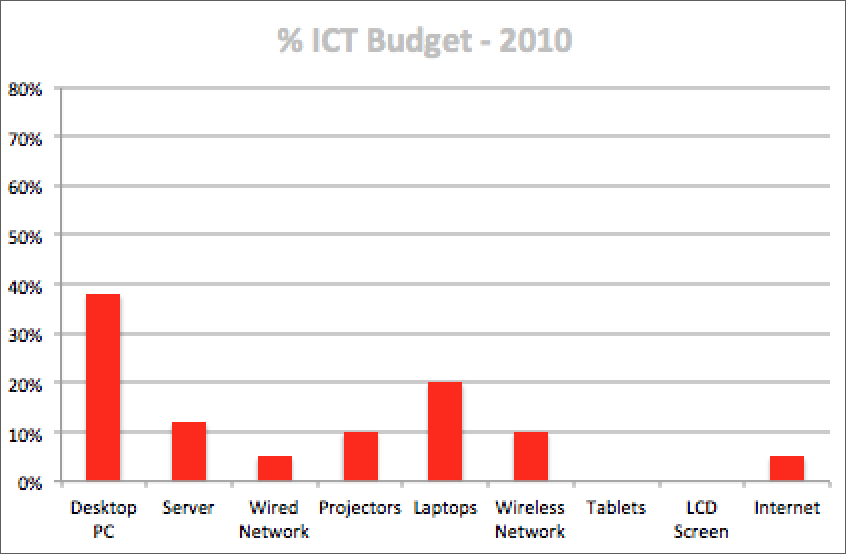 By 2010 the installation of data projectors had expanded into regular classrooms, often in conjunction with interactive whiteboards.
By 2010 the installation of data projectors had expanded into regular classrooms, often in conjunction with interactive whiteboards.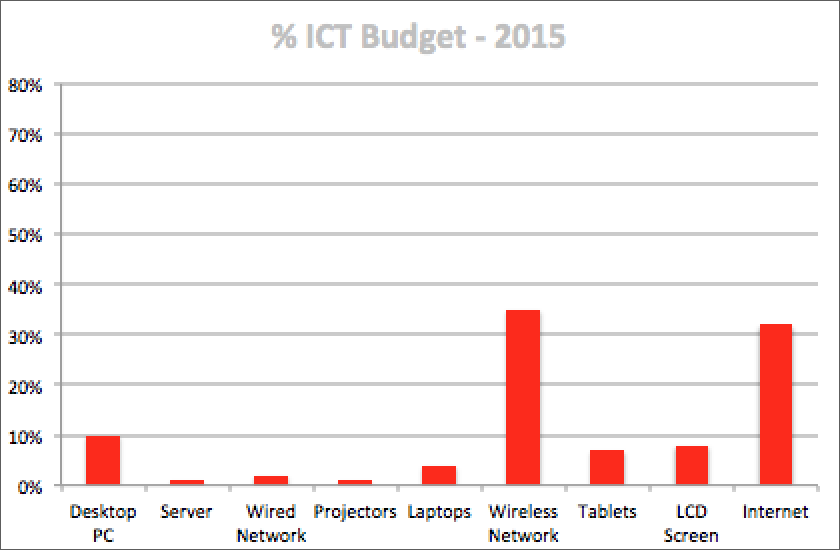 The rapid adoption of mobile devices has seen the expansion of a robust wireless network to every classroom and administrative area of the school.
The rapid adoption of mobile devices has seen the expansion of a robust wireless network to every classroom and administrative area of the school.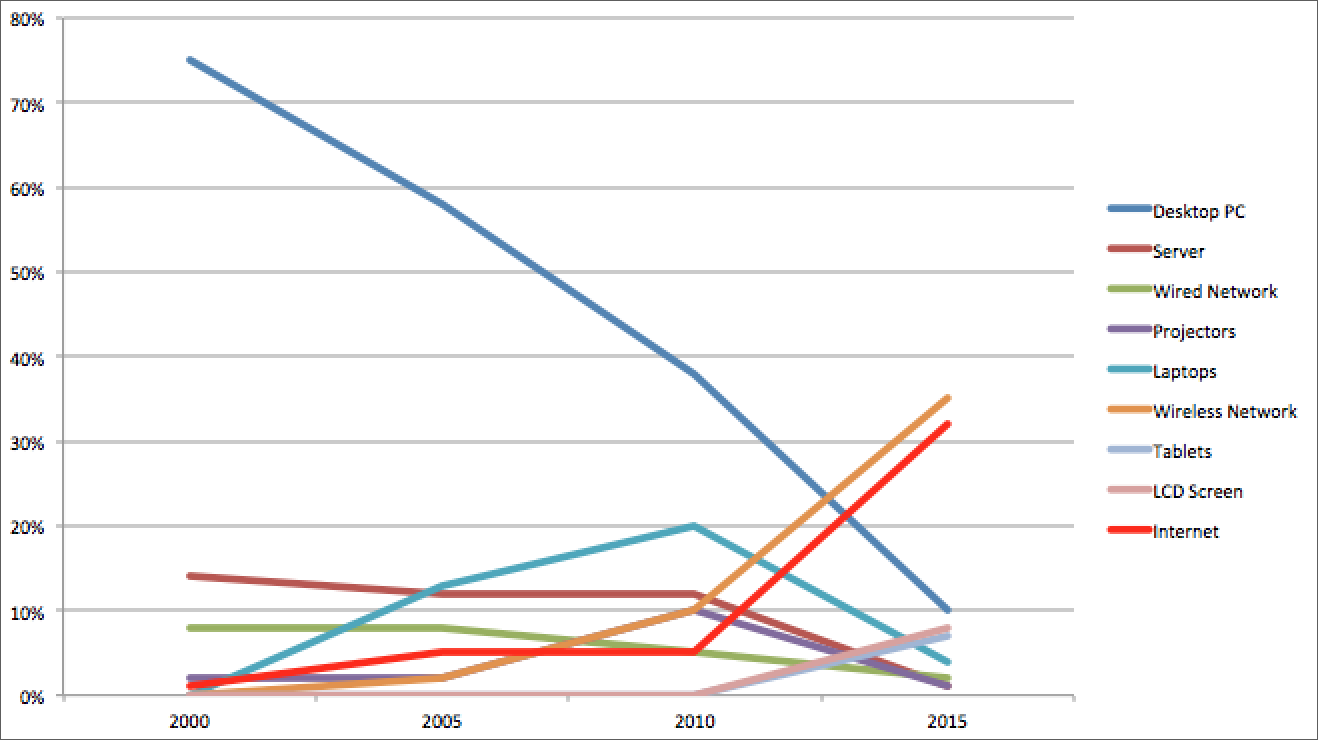
 The transparent integration, or ‘normalisation’, of ICT in the day-to-day curriculum, leveraging the use of students’ and teachers’ personal technologies (including ‘wearables’), has resulted in the school having to spend only a small proportion of their ICT Budget funds on client hardware and software.
The transparent integration, or ‘normalisation’, of ICT in the day-to-day curriculum, leveraging the use of students’ and teachers’ personal technologies (including ‘wearables’), has resulted in the school having to spend only a small proportion of their ICT Budget funds on client hardware and software.